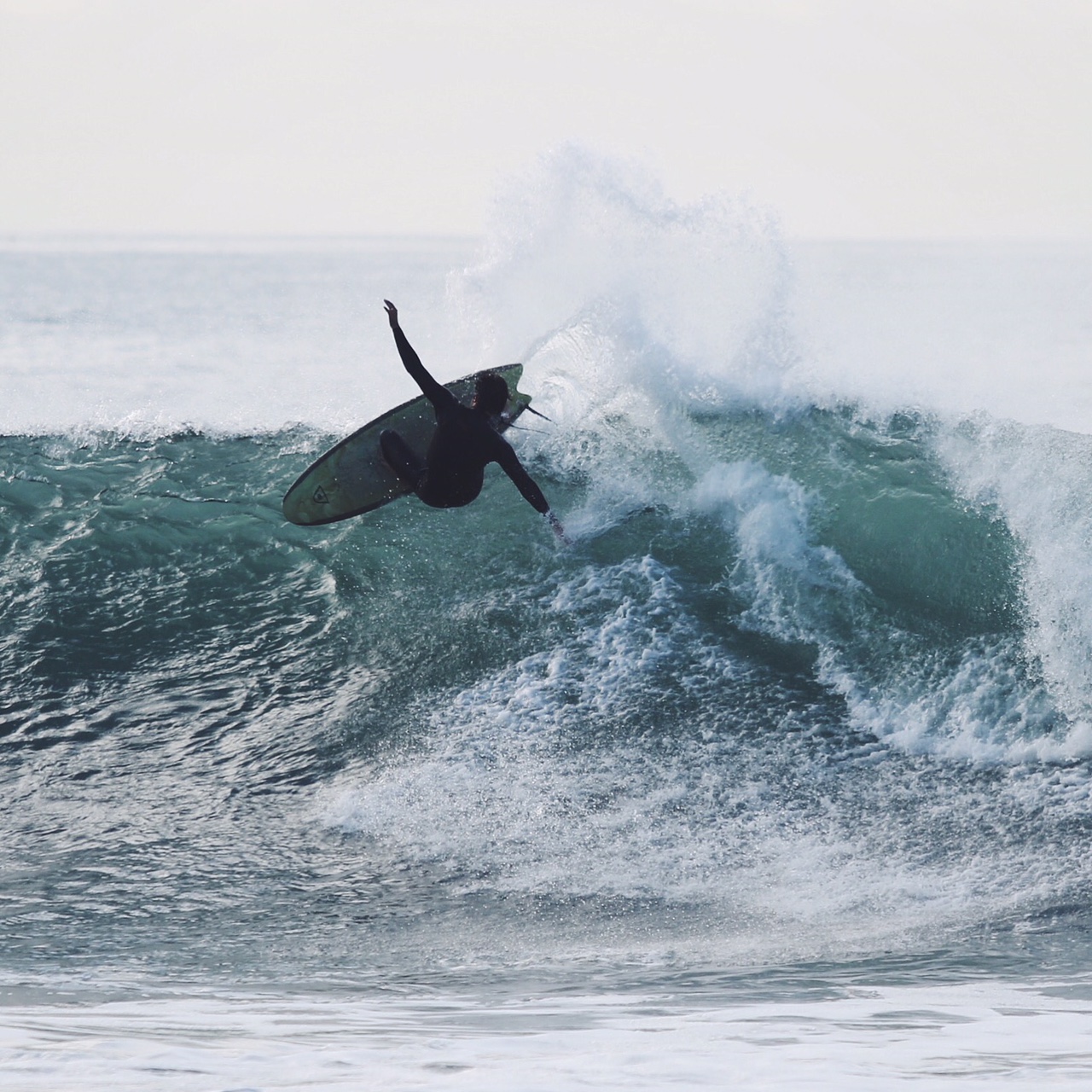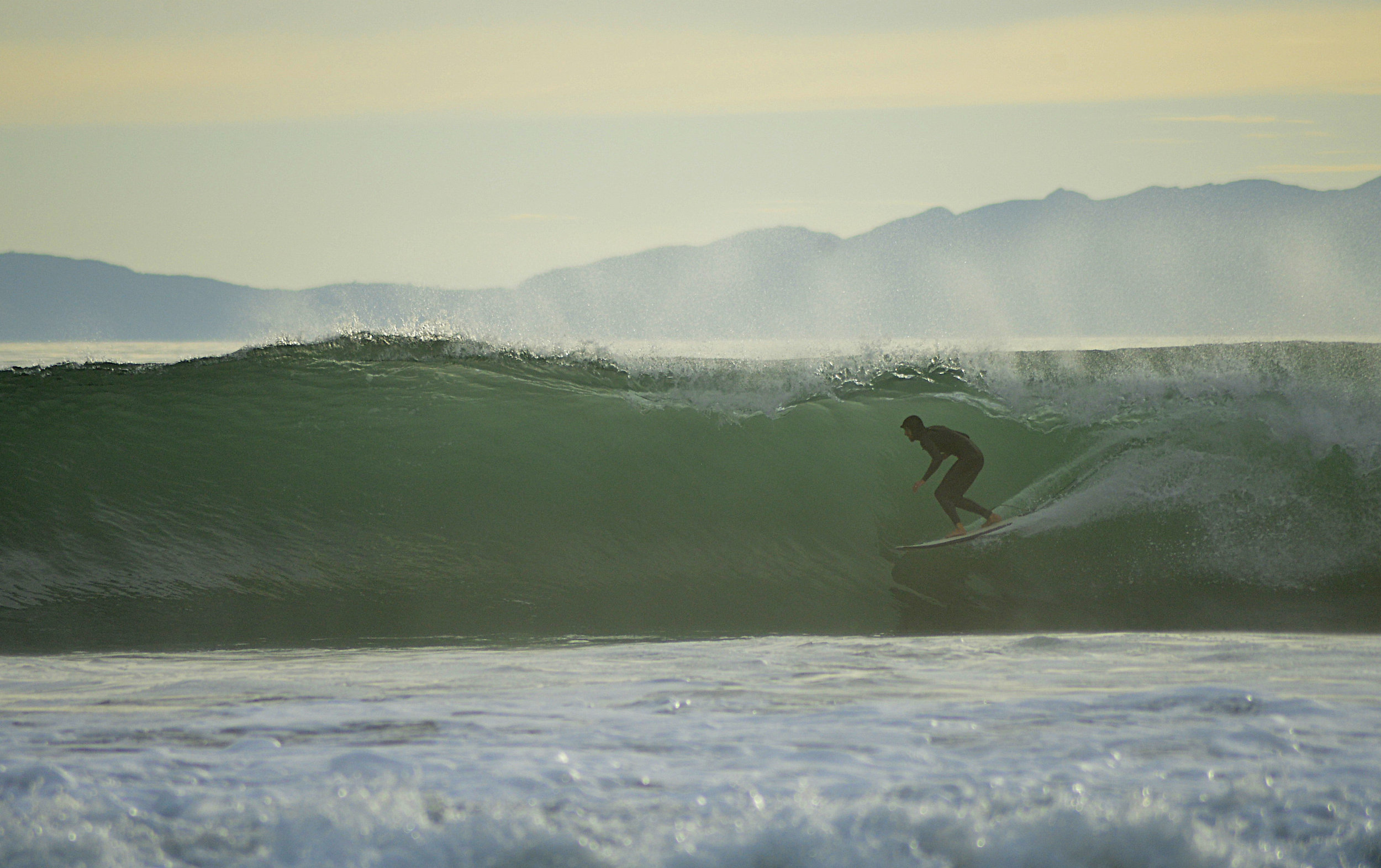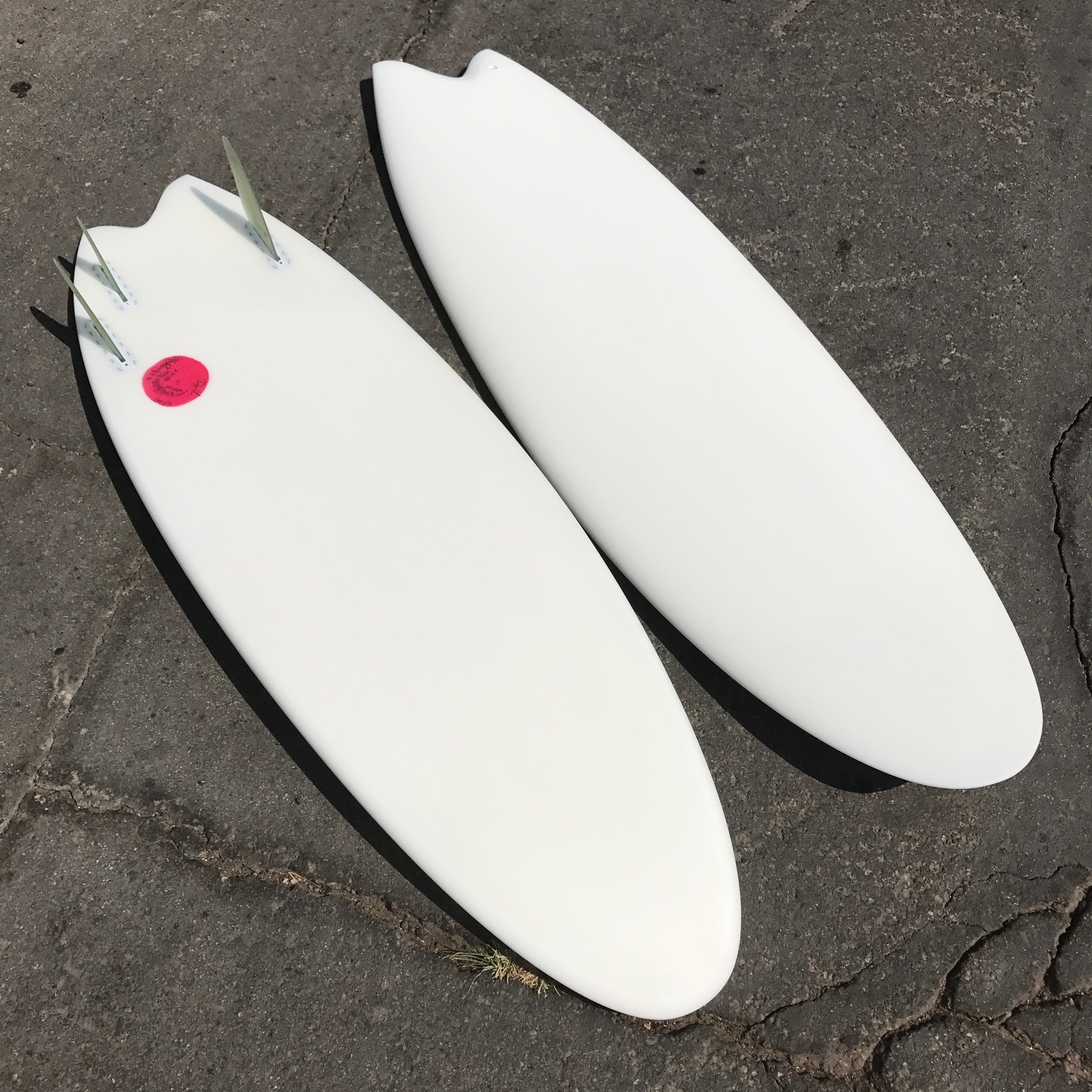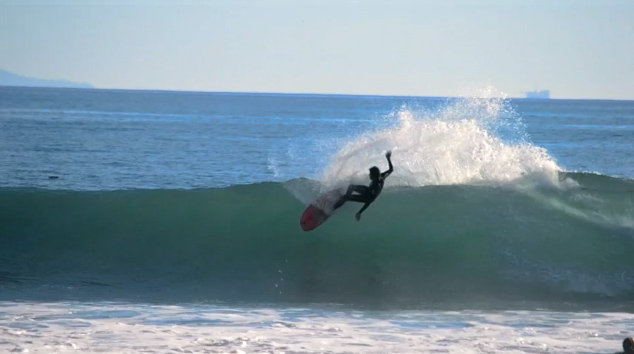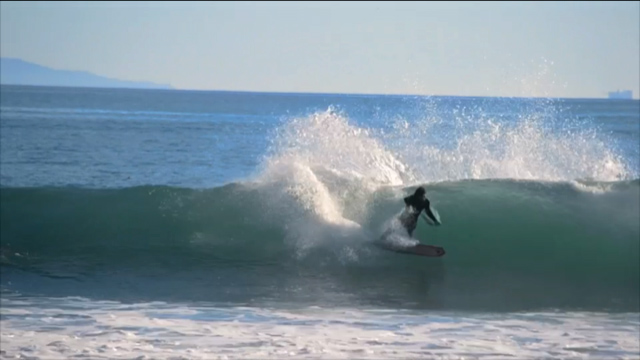S o o p e r S n a k e
I've really tried to dial this shape in over the past few years, with Trevor Gordon being the main proponent and test pilot. He and I were inspired by Ryan Burch to embark on this path, and I'm glad we did. The longer, straighter toe-side rail gives tons of skate and speed down the line; the rounder, softer, more curvaceous heel side is designed to harness all that speed and transfer it into powerful, controlled cutbacks while allowing plenty of snap off the lip. These features seem to be rather well-used across the spectrum of asymmetrical designs, the difference in the SooperSnake is the continuous concave from nose to tail; I run a single concave from nose to tail, with varying depths along the length of the board to flatten the entry rocker and centerline rocker giving the board insane paddle power and a whole lot of ability in good to great waves.
Size your SooperSnake a couple inches shorter than your standard/classic high-performance shortboard - the width at the shoulders of the outline and the concave/rocker creates a really paddle-happy, early-entry kind of board with a lot of grip early in the wave. I shape two versions of this model: One in the 5'4 to 5'8 range that is geared towards smaller, skatier waves, generally about 5'6 x 19 1/4+" x 2 3/8"; And the 5'8+ range that I generally shape narrower, thinner and with more rocker - tuned as a good-wave board to step up that handles head high to DOH waves best. Average dimensions are about 5'9" x 19 1/8" x 2 1/4"
*Asymmetrical boards are shaped with the longer, straighter side on your toe, and the rounder side on your heel. This balance is still correct on your backhand; asymmetry does not limit a board to ‘only going one way’, which is a question I get a lot and figured should be touched upon here.

